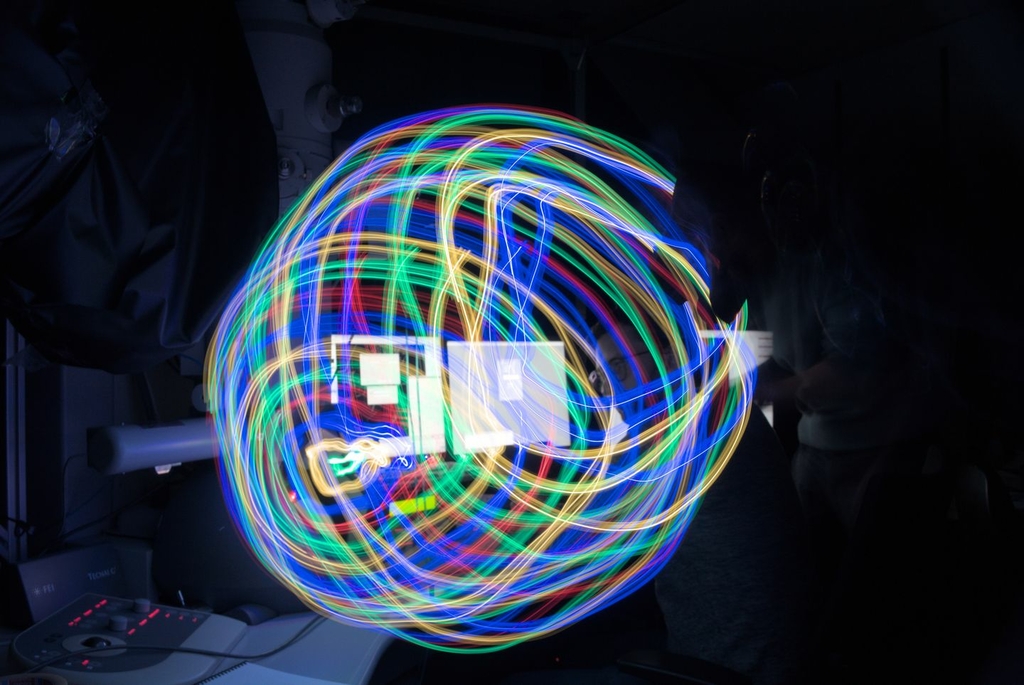A team led by Philipp Haslinger at the TU Wien is breaking new ground in quantum and electron microscopy by combining traditional electron microscopy with cutting-edge quantum optics. Their innovative approach, known as quantum ghost imaging, aims to address the challenges of visualizing sensitive biological and material samples at an atomic scale without damaging them—a breakthrough with far-reaching implications for biology, material science, and beyond.
The Challenge of Traditional Electron Microscopy
Electron microscopy has revolutionized science by enabling researchers to observe structures at an atomic level. However, the high-energy electrons required for this technique often destroy delicate samples, such as biological tissues or sensitive materials, making "live" observation nearly impossible.
“Our goal is to extract more information from fewer electrons,” explains Philipp Haslinger, Associate Professor at the Atominstitut of TU Wien. By merging quantum mechanics with electron microscopy, Haslinger’s team seeks to make this possible, opening doors to applications previously out of reach.
Enter Quantum Ghost Imaging
At the heart of the project lies an ingenious method called quantum ghost imaging. This technique leverages the quantum entanglement of electron-photon pairs to reconstruct an image. When an electron passes through a specialized medium, it generates a photon entangled with it. The electron interacts with the sample, while the photon is detected by a camera. By analyzing the photon's behavior, scientists can infer the electron's interaction with the sample and build a highly detailed image—all without requiring the high energy that would damage the sample.
"Imagine observing molecular and atomic structures as they occur in real-time," says Haslinger. "We’re exploring a fundamentally new way of imaging that could transform how we study dynamic processes."
Promising Applications
The potential applications of this groundbreaking technique are vast. For biology, it could allow researchers to watch proteins fold or observe cellular processes without destroying the sample. In material science, it could help scientists better understand processes like the charging and discharging of battery materials, paving the way for improved technologies.
The team is currently working on demonstrating the proof of principle. They’ve already achieved a “ghost image” and are now searching for evidence of quantum interference— the final piece of the puzzle to confirm quantum entanglement between electron-photon pairs.
Bridging Tradition and Innovation
Haslinger’s project not only pushes the boundaries of quantum mechanics but also reimagines the capabilities of an instrument that has been a cornerstone of science for nearly a century. This fusion of traditional and quantum technologies exemplifies the transformative potential of interdisciplinary research.
Funded by the FWF with a €400,000 grant, the project reflects Haslinger’s passion for exploring quantum phenomena and making them accessible through groundbreaking tools. Having previously been mentored by Nobel Laureate Anton Zeilinger, Haslinger continues to embody the pioneering spirit of Austrian quantum science.
A Bright Future for Quantum Imaging
As Haslinger and his team work to refine their methods, the scientific community eagerly anticipates the impact this research will have. By making the invisible not only visible but also accessible in its most delicate state, quantum ghost imaging promises to set new standards in microscopy, enabling discoveries that once seemed unattainable.

